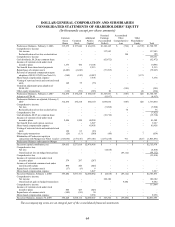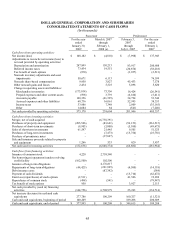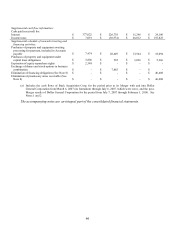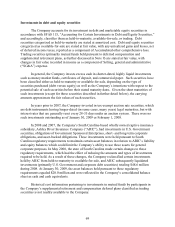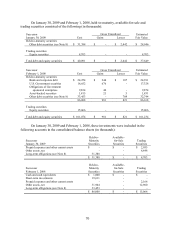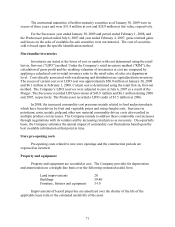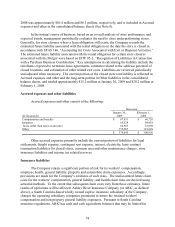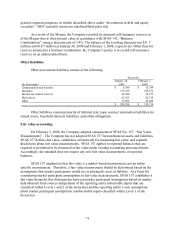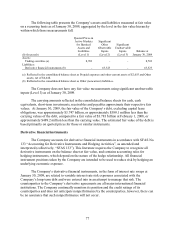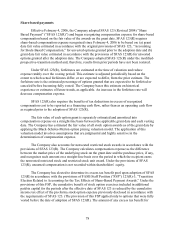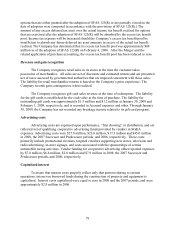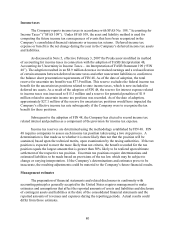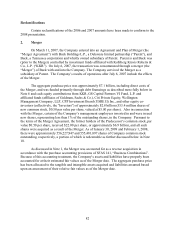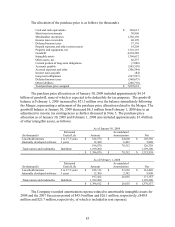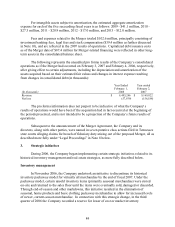Dollar General 2008 Annual Report Download - page 76
Download and view the complete annual report
Please find page 76 of the 2008 Dollar General annual report below. You can navigate through the pages in the report by either clicking on the pages listed below, or by using the keyword search tool below to find specific information within the annual report.
74
2008 was approximately $10.4 million and $8.3 million, respectively, and is included in Accrued
expenses and other in the consolidated balance sheets (See Note 8).
In the normal course of business, based on an overall analysis of store performance and
expected trends, management periodically evaluates the need to close underperforming stores.
Generally, for store closures where a lease obligation still exists, the Company records the
estimated future liability associated with the rental obligation on the date the store is closed in
accordance with SFAS 146, “Accounting for Costs Associated with Exit or Disposal Activities.”
The estimated future liability associated with the rental obligation for certain store closures
associated with the Merger were based on EITF 95-3, “Recognition of Liabilities in Connection
with a Purchase Business Combination.” Key assumptions in calculating the liability include the
timeframe expected to terminate lease agreements, estimates related to the sublease potential of
closed locations, and estimation of other related exit costs. Liabilities are reviewed periodically
and adjusted when necessary. The current portion of the closed store rent liability is reflected in
Accrued expenses and other and the long-term portion in Other liabilities in the consolidated
balance sheets, and totaled approximately $13.2 million at January 30, 2009 and $20.2 million at
February 1, 2008.
Accrued expenses and other liabilities
Accrued expenses and other consist of the following:
Successor
(In thousands)
January 30,
2009
February 1,
2008
Compensation and benefits
$
87,451
$
60,720
Insurance
65,524
64,418
Taxes (other than taxes on income)
66,983
55,990
Other
155,087
119,828
$
375,045
$
300,956
Other accrued expenses primarily include the current portion of liabilities for legal
settlements, freight expense, contingent rent expense, interest, electricity, lease contract
termination liabilities for closed stores, common area and other maintenance charges, store
insurance liabilities and income tax related reserves.
Insurance liabilities
The Company retains a significant portion of risk for its workers’ compensation,
employee health, general liability, property and automobile claim exposures. Accordingly,
provisions are made for the Company’ s estimates of such risks. The undiscounted future claim
costs for the workers’ compensation, general liability, and health claim risks are derived using
actuarial methods. To the extent that subsequent claim costs vary from those estimates, future
results of operations will be affected. Ashley River Insurance Company (or ARIC, as defined
above), a South Carolina-based wholly owned captive insurance subsidiary of the Company,
charges the operating subsidiary companies premiums to insure the retained workers’
compensation and non-property general liability exposures. Pursuant to South Carolina
insurance regulations, ARIC has cash and cash equivalents balances that may be limited for


